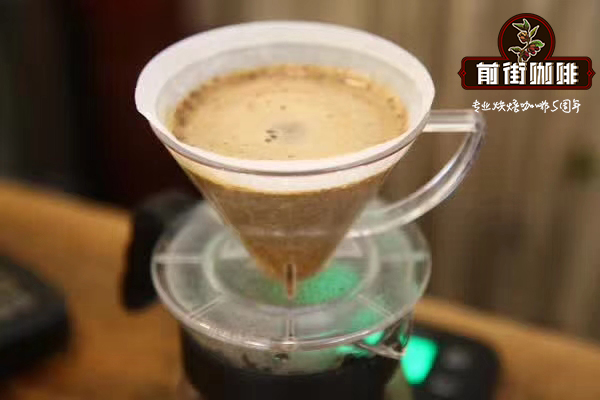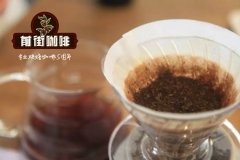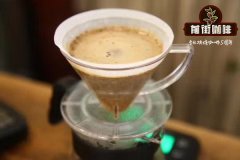The origin of Panama mule manor and the description of the flavor characteristics of mule manor coffee
Panama mule manor
Part of the award won by the mule manor
Best Panamanian (BOP) tanning group champion of 2014
2015 Coffee Review score 97 points, annual champion
2016 Good Food Award
MICE Gold Award & Silver Award in 2017 Australian Coffee Competition
Beans for the champion of the 2017 Ukrainian Coffee Brewing Competition
The champion of the annual ranking
2016 Good Food Award double wins
Washing Geisha / Rosa Micro batch No. 9
Sun-drying geisha / Rosa Micro batch No. 23
Sun-drying geisha / Rosa micro batch No. 24
William Bout was born in the Netherlands and his family runs a cafe called Golden Coffee Box in Barren, so he was fascinated by coffee at an early age. After graduating from college, he first worked and studied in his father's coffee shop, then moved to the United States and worked for the German Bean Dryer Company in San Francisco. In 1999, William Bout founded his first company, Boot Coffee Consulting, which served coffee companies around the world for nearly 15 years.
William Bout had his first coffee called geisha / Geisha/Gesha at Best of Panama in 2004, reversing his understanding of the world of boutique coffee. In 2006, William Bout planted his first geisha sapling at his own Panama mule estate (Finca La Mula), and in 2009, he created a second estate, Finca Sophia, at an altitude of 6000 feet. In 2014, Donkey Farm first participated in the Best of Panama and won the championship in the Sunshine Group and gained a high reputation.
In 2004, William Bout learned that there was a piece of land near Mount Baru and bought it. It was later known as "Donkey Manor"-La Mula. William Bout planted Geisha on his estate in 2006 because he fell in love with Geisha during a cup test.
William Bout's love and attachment to Geisha did not stop because of the establishment or award of the manor, but created a deeper sense of mission for a geisha to find its roots. William Bout organized several expeditions to the western producing areas of Ethiopia, and after several searches, he was locked in a small forest not far from the geisha town in Bench Maji province, collected some samples and began to analyze the flavor, and asked Dr. Sarada Krishnan, an expert from the Denver Botanical Garden, to study the Panamanian geisha and Ethiopian native geisha from a genetic point of view.
Mule Manor has a higher altitude (about 1700-1800 meters) so that coffee beans have a higher density than other rose summers. Recent measurements show that the density of mule Rosa peas can reach 840kg / m3, which is 5% higher than that of Rosa growing at 1550 meters above sea level, and it is more difficult for heat to enter the bean core. The characteristic of high density brought about by high altitude is contrary to the effect of the extended centerline, which makes baking more complex. The most difficult part is to show the flavor of the flowers. Excessive use of hot air does not help the fragrance of flowers. The more hot air is used, the more time it takes for coffee to develop its floral flavor.

Important Notice :
前街咖啡 FrontStreet Coffee has moved to new addredd:
FrontStreet Coffee Address: 315,Donghua East Road,GuangZhou
Tel:020 38364473
- Prev

What is the flavor of Panamanian donkey manor coffee with beans for the champion of the 2016 World barista Competition?
Professional coffee knowledge exchange more coffee bean information please follow the coffee workshop (Wechat official account cafe_style) Lamatus Family has three well-known coffee estates Elida Estate (Arida Manor), El Burro Estate (Donkey Manor) and LuitoGeishaEstate (Louito Manor), it can be said to be the winner of BOP (Best Panama) category competitions over the years.
- Next

An introduction to the Brazilian sirado region and the flavor characteristics of sirado coffee Description
Brazil is located in South America and produces about 40 million bags of coffee every year (accounting for about 30% of global production), making it the world's number one coffee producer. Coffee is produced in five provinces: Parana, Sao Paulo, Minas Gerais, Espirito Santo and Bahia. Hirado is located
Related
- Detailed explanation of Jadeite planting Land in Panamanian Jadeite Manor introduction to the grading system of Jadeite competitive bidding, Red bid, Green bid and Rose Summer
- Story of Coffee planting in Brenka region of Costa Rica Stonehenge Manor anaerobic heavy honey treatment of flavor mouth
- What's on the barrel of Blue Mountain Coffee beans?
- Can American coffee also pull flowers? How to use hot American style to pull out a good-looking pattern?
- Can you make a cold extract with coffee beans? What is the right proportion for cold-extracted coffee formula?
- Indonesian PWN Gold Mandrine Coffee Origin Features Flavor How to Chong? Mandolin coffee is American.
- A brief introduction to the flavor characteristics of Brazilian yellow bourbon coffee beans
- What is the effect of different water quality on the flavor of cold-extracted coffee? What kind of water is best for brewing coffee?
- Why do you think of Rose Summer whenever you mention Panamanian coffee?
- Introduction to the characteristics of authentic blue mountain coffee bean producing areas? What is the CIB Coffee Authority in Jamaica?

